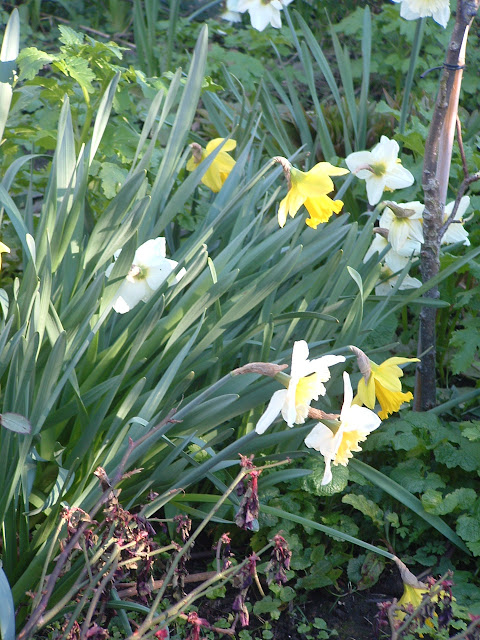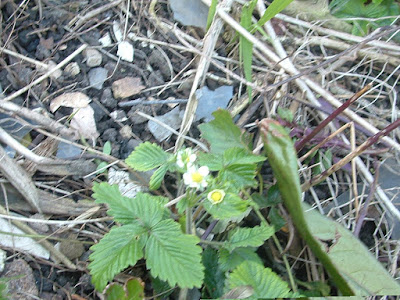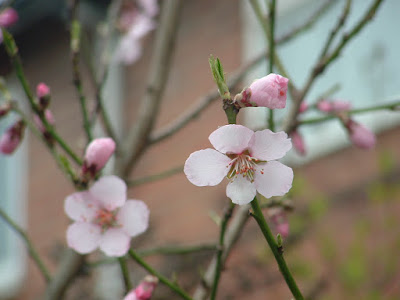 |
| The last cabbage, March 2017 |
The very last cabbage worth eating (though honestly there are still about four or so tiny ones destined for chicken feed) is also pictured in a previous post on
winter cabbage. It's grown bigger since then, but I suspect it wants to go to seed like the Tuscan kale (now all eaten). Time to harvest! New cabbage seeds are now sown for summer/autumn eating. Winter cabbage seeds will be sown again later in the year.
We're still having the occasional salad from miner's and lamb's lettuces, and this week I harvest the first young arugula plants--so tasty. They self sowed in the cold frame, along with a few miner's lettuces. I treat the miner's as cut and come again, but the lamb's and arugula were cut/pulled whole. The six year old (incidently he's now seven, so now I'll be referring to him as such in the future) even located and picked a couple tiny sorrel leaves. I moved three sorrel plants from the veg beds to the perennial, and was amazed at the root length on them: at least two feet long. I hope they're dredging up some good minerals at that depth!
 |
| Sutherland kale, still growing March 2017 |
As I mentioned, the Tuscan kale is done, but the Sutherland kale (pictured) has gone into a frenzy of new growth. I'm planning on letting it seed this year, but until then, we'll be eating it. I really prefer the Sutherland with its broad smooth leaves: the Tuscan looks more traditional with upright dark green crinkly leaves, but it's got a high proportion of stem compared to leaf, and those crinkles are great for hiding creepy crawlies. Taste-wise, they are pretty similar: both are like a mild cabbage. I may not bother with the Tuscan kale this year, or possibly just make a late sowing for winter use only; it survived the winter well, and we even had a few meals off it during the coldest part.
Not pictured is the celeriac harvest from last month, two whole roots with a grand total of three ounces combined. They were tasty, I'll give them that. But worth it? Well, I admit they were also in the poorest soil in the garden--they probably would have been bigger (and not so dead) in better soil. I'm trying regular celery this year, but I still have celeriac seed so it may get another chance for next winter...
Food totals are certainly up in February and March compared to the winter, and nearly all of it is from 2016's plants. I'm very pleased with the planning and foresight of my garden manual,
The Complete Book of Self Sufficiency; I have a succession of vegetables planned and nearing harvest (such as purple sprouting broccoli and a few leeks), not just the standard summer and autumn harvest.



















